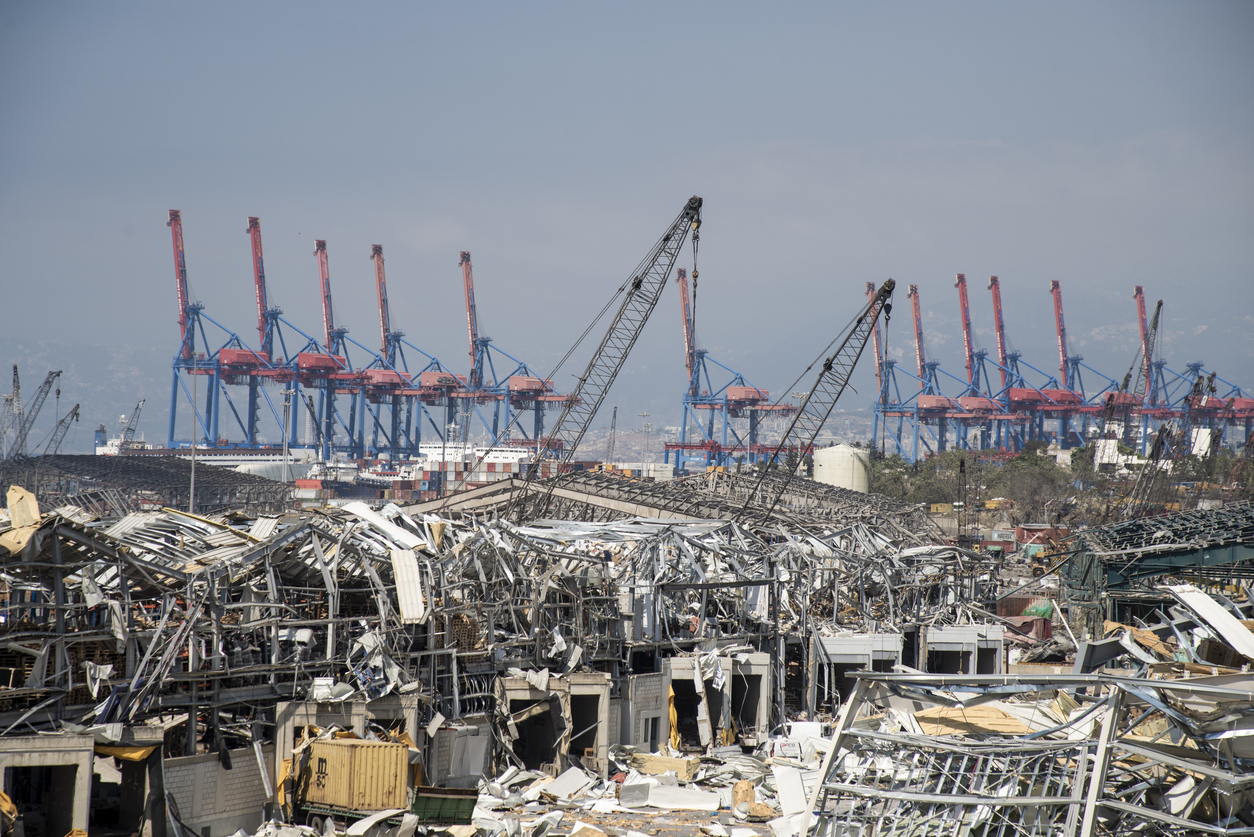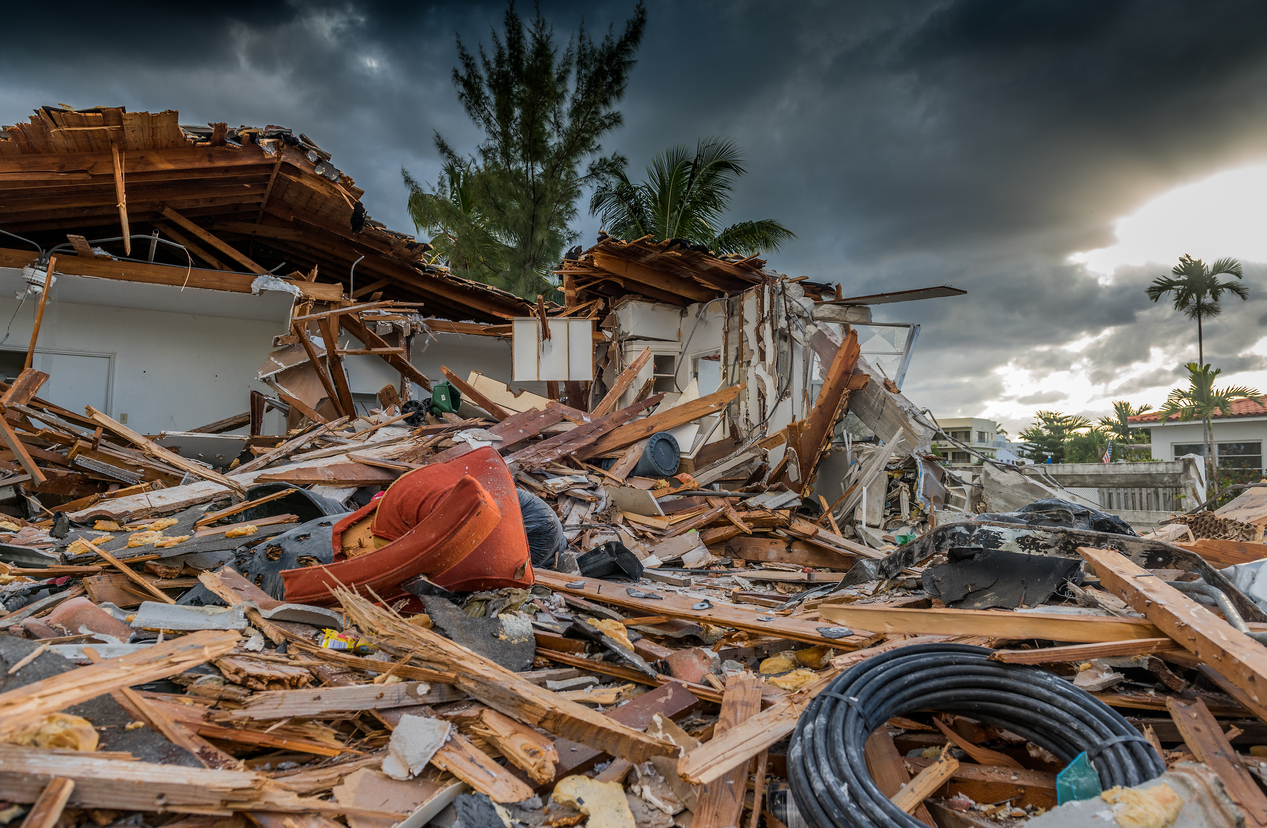Top 10 Most Common Errors in Damage Quantification – #2: “Build It and He Will Come”
22 July, 2015
Ephraim Stulberg
Canada
I have already written, in another context, about the interaction between physical assets and lost profits. I want to explore the issue from a couple of additional angles.
In the 1989 film Field of Dreams, Kevin Costner’s character hears a voice telling him “build it and he will come”. Costner acts on the voice – why not, wouldn’t you? – and builds a baseball diamond in his Iowa cornfield; sure enough, the ghosts of the 1918 Chicago White Sox, and eventually Costner’s father, appear on the diamond. And James Earl Jones sounded great.
In real life, this is not the way business works. Sales do not necessarily grow or contract in direct proportion to a firm’s capacity. You can build it, but they may not come. (Just ask Target Canada).***
***For anyone reading this in the year 2020, Target Canada was the Canadian subsidiary of a US department store that made a grand entrance into Canada in 2013, and a rather less grand exit less than two years later.
Consider the following examples:
- A hotel suffers a fire on one of its 10 floors, which cannot be used for 1 year. The hotel had an average of 75% occupancy in the year prior to the fire. If the hotel’s normal annual revenue is $1M (or $100,000 per floor per year), is the revenue loss equal to 75% of $100,000?
- A commercial helicopter operator planned to expand his fleet from 3 to 4 helicopters, but as a result of a bodily injury sustained in a car crash he was forced to cease operations. If he had historically generated annual revenue of $600,000 per year, is it reasonable to assume that his annual revenue would have been $800,000 per year with the addition of a fourth chopper (assuming he can prove that he would have gone ahead with the fleet expansion)?
- A manufacturing plant with 8 identical production lines suffers damage to 2 of its lines. Is it appropriate to assume that it will suffer a 25% decline in revenue?
The answer in all three cases is: maybe, but likely not. If a hotel is normally at 75% capacity, that means that it normally has unused capacity of 25%, or 2.5 floors out of a 10 floor hotel; theoretically, the loss of only 10% of the hotel’s normal capacity (i.e. one floor) may not have anyimpact on revenue.
Similarly, the addition of a fourth helicopter may lead to a proportionate increase in revenue, but only if there is sufficient demand willing to pay for and make use of the additional capacity.
This is not to say that there is no impact from the loss of capacity. The hotel that averages 75% occupancy may have 100% occupancy for half the year and 50% occupancy for the other half; clearly, in that case the loss of an entire floor would be quite impactful during the half year in which the hotel is normally full.
Moreover, even if the historic demand had been consistently 75%, night after night, that does not mean that this would have continued indefinitely into the future. It is important to consider any changes to the demand for the claimant’s planned capacity. Analysis of pertinent industry statistics, where available, may prove helpful in this regard (e.g. published tourism statistics for the region in which the hotel was located).
Conclusion
There is a flip side to the assertion that an increase in capacity does not necessarily drive a corresponding increase in revenue, and that is that a large increase in revenue (premised on anticipated demand for a product or service) can rarely ever be accomplished without a corresponding capital investment. An increase in capacity is necessary, but not sufficient, for an increase in revenue to occur. In a coming post, I will provide an illustration of this and show how it can have a significant impact on lost profit calculations.
The statements or comments contained within this article are based on the author’s own knowledge and experience and do not necessarily represent those of the firm, other partners, our clients, or other business partners.
Authors

Ephraim Stulberg
B.A, M.A, M.BA, CPA, CA, CBV, CFF, Partner/Senior Vice President
- +1 416.366.4968
- estulberg@mdd.com
- Toronto, ON, Canada
Services
Articles
Relevant Articles
Our experts are extremely knowledgeable about thier subject areas and often write educational material and commentary on topical issues they come across.
Benefits of Hindsight when Quantifying Financial Losses
Claims for economic losses arising out of failed real estate developments can be complex to prove, requiring evidence concerning many different aspects of the proposed construction project. There can also be different approaches to quantifying losses. Both of these issues...
Lost Profits Measurement in the Cannabis Industry
What used to be considered an illicit drug in most countries is now a decriminalized plant with some medicinal potential. Cannabis is in the midst of a global transformation into a major industry with massive investment and growth potential. Canada...
Claim Considerations Related to the Beirut Port Explosion – Part 2
On 17 October 2019 large numbers of protesters began appearing in Martyrs Square, Nejmeh Square, and Hamra Street, as well as many other areas of Beirut and throughout Lebanon. The reasons for the protests are wide reaching from a social,...
Claim Considerations Related to the Beirut Port Explosion – Part 1
In this two-part series, we write about the claim considerations related to the Beirut port explosion on 4 August 2020. On 4 August 2020 at approximately 18:00 local time, an explosion measuring 3.3 on the Richter scale ripped through Beirut...
How to Calculate Losses Under Business Interruption Coverage
In this article we provide a brief overview of how to calculate losses under business interruption coverage. Broadly speaking, business interruption (“BI”) insurance coverage is meant to indemnify the insured for the loss of profit it suffers as a result...
Forensic Accounting Liability Exposures
The below article first appeared in THE STANDARD, New England’s Insurance Magazine. It features excerpts from a presentation given by MDD partners Paul McGowan, CPA, CVA and Jon Ducey, CPA, CVA on the topic of liability claims and other key...
Economic Damages from Personal Injury: A Forensic Accountant’s Perspective
Regrettably, individuals can experience a temporary or permanent diminishment in their ability to perform certain functions due to a tortfeasor. Forensic accountants and economists are regularly retained in matters involving the injury or death of an individual for the purpose...
Caribbean ‘vacation’ for CAT claims
As a global forensic accounting firm, we at MDD have a “boots on the ground” mentality when it comes to quantifying economic damages for catastrophe (“CAT”) claims. The busy hurricane season in 2017 meant that I, along with many of...
Mining Claim – All Is Not As It Appears
In this briefing we focus on mining claims, and share our knowledge and technical expertise on one of the loss measurement issues regularly encountered in mining claims, production bottlenecks. What you will learn from reading the article include: How the...
Identifying and Measuring Short Duration Business Interruption Losses
What have we really lost? One of the most common issues that arise from short-duration interruptions, those measured in days as opposed to weeks or months, is whether the business actually suffered a permanent loss of revenue or whether the...
Contaminated Products Insurance Claims: How to Check the Costs of a Product Recall
The number of food product recalls reported in the UK through the FSA (Food Standards Agency) rose 78% in 2015. With many UK businesses operating internationally, a product recall situation can impact many countries and cost millions of pounds in...
Business Interruption: Complex Interdependencies
As business structures become more complex, companies often need more sophisticated insurance products to properly manage their business interruption risks. For example, narrow vertical integration makes risk management more difficult and increases the demands placed on insurers regarding correct risk...
Catastrophe Events and Business Interruption Insurance
In the event of a devastating catastrophe (“cat”) be it an earthquake, hurricane, flood, or tornado, the first and foremost priority is to ensure the safety all the people involved. Once this has been established, business owners can then begin...
A Primer To Accurately Calculating Lost Profits
What Are Lost Profits and How Are They Calculated? Lost profits are economic damages caused by a disruption in business operations. The damages can be the result of a variety of factors, some of which include patent infringement, breach of...
I Lost My Customers and It’s Your Fault!
In Schwartz Levitsky Feldman LLP v. Werbin, 2015, an action was put forward by Schwartz Levitsky Feldman (SLF) claiming loss of profits due to the departure of Mr. Werbin. The firm contended that they purchased Werbin’s clients when they purchased...
Foreign Exchange Issues in Damage Quantification: Part II – Applying the Concepts
In the previous post, we presented a basic framework for analyzing the impact of foreign exchange fluctuations on quantifying financial remedies. We argued that the treatment of foreign exchange should be consistent with the principal underlying the financial remedy being awarded;...
Foreign Exchange Issues in Damage Quantification: Part I – Basic Concepts
International trade is an increasingly important part of the Canadian economy, as this picture clearly shows: As a result, it is not uncommon for litigation to involve the quantification of financial remedies across multiple political and monetary boundaries. How does...
Adding up the Damage: Lost Profits vs. Business Value
When a business is destroyed as a result of wrongdoing, there are two commonly used methods by which the plaintiff’s damages may be measured. One method is to appraise the value of the plaintiff’s business at the date of loss;...
Court Breaks with Apportionment
The case of Varco Canada Limited v. Pason Systems Corp., 2013 FC 750 (CanLII) involved an award of over $52M based on an accounting of the defendant’s profits. Perhaps more importantly, the decision sheds light on a number of conceptual...
Calculated Risk: A $75M Award Adds Urgency to Pre-Judgment Interest Considerations
Pre-judgment interest is often the last thing litigants ponder. A recent award of $75 million in pre-judgment interest in Eli Lilly v. Apotex, 2014 FC 1254 (“Cefaclor”) may change that. Cefaclor involved the infringement of patents for an antibiotic. Damages...
Top 10 Most Common Errors in Damage Quantification – #2: “Build It and He Will Come”
I have already written, in another context, about the interaction between physical assets and lost profits. I want to explore the issue from a couple of additional angles. In the 1989 film Field of Dreams, Kevin Costner’s character hears a voice telling him...
Pre-Judgment Interest, Part III: Property Damage, Profit, and PJI
My practice involves a lot of work for property insurance companies. When damage to property occurs, the property owner may advance a claim against the third party tortfeasor for both the value of the damaged property as well as an...
Pre-Judgment Interest, Part II – Interest and Taxes
In the previous post, I discussed the large pre-judgment interest award in Cefaclor. In that case, one of the issues raised by defendant’s counsel was that to award the plaintiff compound interest would result in overpayment; since the damages award is...
Pre-Judgment Interest: Part I: Establishing a Rate – A Basic Framework
This post on pre-judgment interest deals with the basic question: what is the best method by which to calculate a pre-judgment interest rate? The Law Pre-judgment interest is interest that is added to a plaintiff’s monetary award in respect of...
Pre-Judgment Interest: Introduction
Pre-judgment interest is possibly the least sexy topic imaginable. But there is perhaps no better vehicle for a discussion of the fundamental issues involved in financial loss quantification. A short article of mine dealing with a very large PJI award (over...
Top 10 Most Common Errors in Damages Calculations – #1: Failure to Consider Saved Expenses
Towards the end of the Great War (or World War I as it came to be called), the American president, Woodrow Wilson, proclaimed Fourteen Points outlining his goals for the reconstitution of Europe, and the international state system as a...
Tax Rates, Timing and Damages
In Canada, as a general rule, damages awards are subject to the same tax treatment as the monetary amounts they are meant to replace. For example, awards for lost profits are taxed as business income [1]. Litigation can often take...
Dunkin’ Donuts c. Bertico inc., Part II: Lost Profit & Loss of Business Value
Towards the end of its decision in Dunkin’ Brands Canada Ltd. c. Bertico inc.2015 QCCA 624, the Quebec Court of Appeal discussed the issue of whether an award for both a) lost profits up to 2005 and b) loss of business...
Dunkin’ Donuts c. Berticoinc, Part I: The Benchmark Approach to Lost Profits
In April 2015, the Quebec Court of Appeal released its decision in Dunkin’ Brands Canada Ltd. c. Bertico inc. 2015 QCCA 624. The Court of Appeal upheld the trial judge’s ruling (Bertico inc. c. Dunkin' Brands Canada Ltd., 2012 QCCS 2809) that...
Agricultural Loss – Quantifying Economic Damage for a Hog Farm
Damage quantification for livestock losses can be difficult as it often requires consideration of market price fluctuations, age and weight of livestock at the time of loss and the end purpose of the livestock - considering whether they are for...
Business Interruption Loss – The Interaction between Inventory Losses and Business Interruption Claims
This article explores the areas of overlap between insurance coverage for inventory loss and business interruption. In the event of physical damage to inventory, different policies provide different valuations, including: replacement cost, actual cash value, historical cost or selling price. ...
A New Take on the Accounting of Profits Remedy
The Federal Court’s decision in Merck & Co. v. Apotex Inc. [2013] F.C.J. No. 840, has shed a novel light on to how damages for patent infringement are to be calculated. Previously, in its decision in Monsanto Canada Inc. v....
Quantifying Business Loss Involving Expropriation of Newly Established Businesses
With increasing activity in public works projects in the Greater Toronto Area (e.g. the Toronto-York Spadina Subway extension) and other highway expansions across Ontario, we can expect a large number of businesses to be affected by expropriation. This article will...
Documentation and Litigation
Litigation can be a scary and intimidating process. Preparation is key and includes ensuring that the documentation you need to prove your case is ready at hand. Below are some common forms of litigation and the documentation that should be...
Coinsurance: Can Someone Please Explain This to me Once And For All?
In the US property insurance market, coinsurance, an often-misunderstood concept, refers to the sharing of risk between the insured and the insurer and applies to property damage and business income loss coverage. Coinsurance as it applies to Property Insurance Because...
Handling Large Complex Claims
Large insurance claims are almost always complex, time-consuming and in need of a forensic accountant. They are complex because of the secondary impact from the misfortune setting off the initial claim. Take, for example, a fire at a ski hill...
Projecting Sales in Business Income Losses is an Art – Not Necessarily a Science
Insurance policies generally state that in determining the Actual Loss Sustained under business income coverage, consideration must be given to actual experience of the business before and the probable experience thereafter had no loss occurred. Thus, the goal in evaluating...
The Impact of Foreign Exchange Rate Movements on Loss of Profit Claims
Foreign exchange risk has been high on the agenda of CFOs of MNCs for many years. With the expansion of the global economy and diverse influences on exchange rates - such as the current climate of economic uncertainty and fear...































